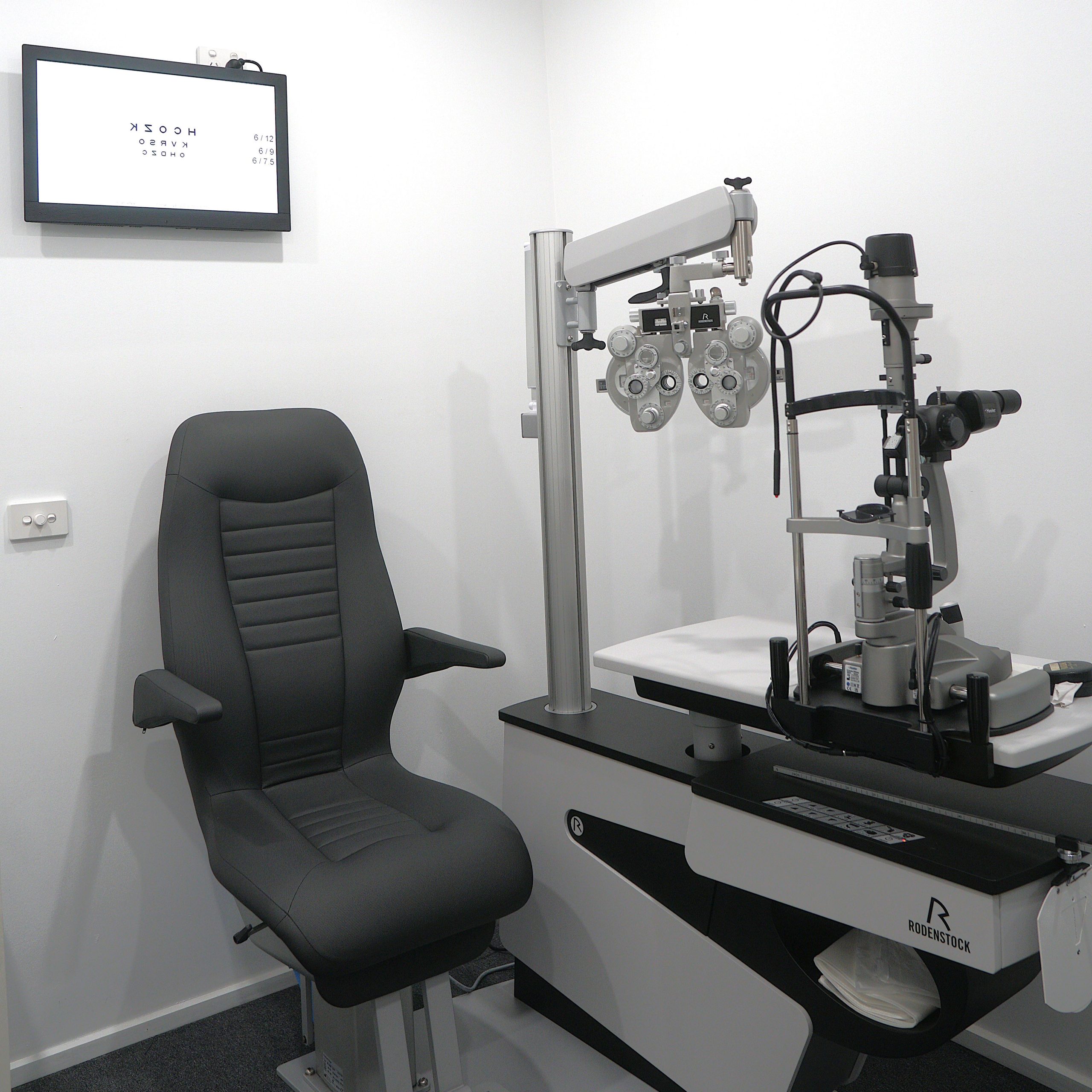
Comprehensive Eye Examination
Our comprehensive eye examinations take about 45 minutes. We spend more time thoroughly assessing your eyes, then discussing your vision and eye health issues with you. Regular eye exams help detect early signs of conditions that could affect vision, ensuring early treatment and the prevention of more severe eye issues.
Optical coherence tomography (OCT)
It is non-invasive imaging technique that uses light waves to capture high-resolution cross-sectional images of the retina and other parts of the eye. OCT plays a vital role in diagnosing, monitoring, and managing a range of eye conditions, ensuring better outcomes and timely interventions for patients at risk of vision impairment.
Ultra-wide digital retinal imaging
Ultra-wide digital retinal imaging is an advanced diagnostic technique used to capture highly detailed, wide-field images of the retina. The technology uses a specialised digital camera that captures high-resolution images of the retina, including both the macula (central vision area) and the peripheral retina. It is commonly used to detect and monitor conditions such as diabetic retinopathy, age-related macular degeneration, retinal vein occlusions, and peripheral retinal tears or detachment.
Diabetic Eye Examination
Specialised eye exam designed to detect eye problems caused by diabetes, particularly diabetic retinopathy, a condition that can damage the blood vessels in the retina. Since diabetes can lead to serious eye complications, including blindness, regular eye exams are crucial for early detection and treatment.
Red Eyes and Infections
A red-eye infection examination involves a combination of tests to assess the severity and cause of the redness. These tests help Optometrists determine whether the issue is caused by a viral, bacterial, or other type of infection and how best to treat it. Regular monitoring is important for preventing complications, especially for conditions that could threaten vision.
Children Vision Testing
Children’s vision testing at an optometrist is essential because early detection of vision problems can significantly impact a child’s overall development, learning, and quality of life. Many common vision issues, such as nearsightedness, farsightedness, astigmatism, or amblyopia (lazy eye), can go unnoticed in young children since they may not be able to communicate their struggles effectively. Early eye exams help identify these issues before they interfere with a child’s ability to perform in school, engage in sports, or socialize. Regular vision checks also ensure that any eye health conditions, such as strabismus (crossed eyes) or more serious disorders, are detected early and treated appropriately. By addressing vision problems early, optometrists can prevent long-term complications and ensure children have the best opportunity to thrive academically and socially.
CASA Aviation Eye Testing
CASA Aviation Eye Testing is an essential component of the medical assessments required for pilots, air traffic controllers, and other aviation personnel in Australia. The Civil Aviation Safety Authority (CASA) requires individuals in these roles to meet specific visual acuity standards to ensure they can safely operate in the aviation environment. Clear vision is critical for tasks such as reading instruments, navigating, spotting other aircraft, and responding to emergency situations.
VicRoads / Occupational Vision Assessment
The VicRoads Vision Assessment is a required eye test for individuals seeking to obtain or renew their driver’s license in Victoria, Australia. It is designed to ensure that drivers meet the necessary vision standards to drive safely on the road. Good vision is essential for tasks like reading road signs, detecting hazards, and maintaining proper control of the vehicle. The VicRoads vision assessment evaluates an individual’s visual acuity, field of vision, and color recognition to ensure they are fit to drive.
An Occupational Vision Assessment ensures that individuals are fit for their specific job roles by confirming their visual abilities meet required standards for safety, accuracy, and performance. Regular assessments help detect potential vision issues before they affect work productivity or lead to accidents, improving both workplace safety and employee well-being.










